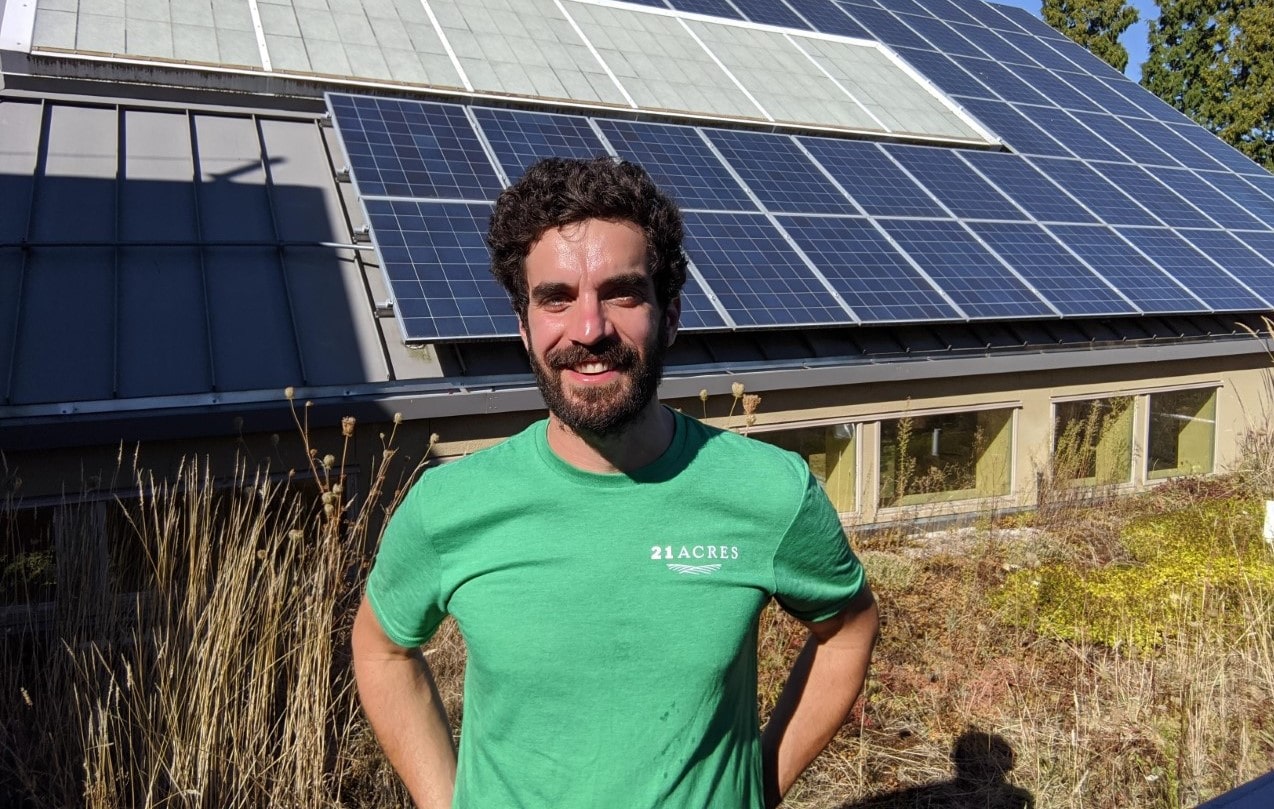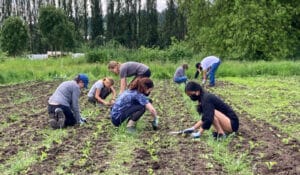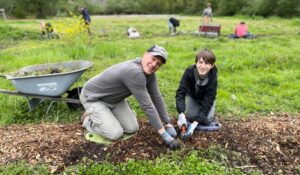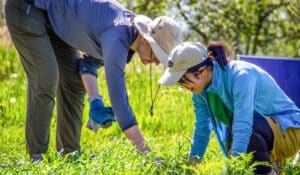
Why I’m Shopping for Zero Carbon Locally by Barry Febos, Energy Manager & Educator
Why I’m Shopping for Zero Carbon Locally by Barry Febos, Energy Manager & Educator
- posted on: September 2, 2020
- posted by: Rebecca Jordan
"*" indicates required fields

Hi all—Barry Febos here, Energy Manager & Educator at 21 Acres. In observance of this year’s recent “Earth Overshoot Day,” I will be purchasing local carbon offsets to balance all of my transportation emissions for the year.
Earth Overshoot Day is the day each year that we as humans have officially used up all the resources that the earth can sustainably regenerate in the course of a full year.

The good news is that there are a whole host of exciting sustainable practices, technologies, and ways of reducing waste that can help us to push this marker back each year.
These solutions offer ways of not only reducing our impact, but of creating new jobs and expanding the green economy. Jump starting the green economy with a Green New Deal, for example, could create substantial impact reductions and provide economic benefits for families in the US.
I put a fair amount of effort into living as sustainably as I can, but even so, I still do not lead a carbon neutral life. In the meantime, I’ll offset as much as I can afford to by purchasing carbon offsets. These purchases allow other organizations, farms, and more to neutralize my emissions by paying them to expand on the good work that they are already doing.
Luckily for me, our region offers a wide range of projects and organizations to choose from when it comes to buying offsets. These options make up a uniquely local carbon market that allows me to not only support awesome climate solutions, but the local economy as well.
What is a carbon market anyway?
I’m sure clear images come to mind when you think of your local farmers market, or the Farm Market here at 21 Acres, but what the heck is a local CARBON market? In short, a carbon market is a place where people or organizations who are concerned about climate change can go to offset their carbon emissions by supporting projects that decrease emissions or remove carbon from the atmosphere.
Before we dig into the exciting work happening in our region, let’s first take a step back to better understand the reason for carbon markets and how they work. It all comes back to climate change.
Carbon emissions or carbon dioxide (CO2) emissions are the main source of human–caused climate change. Carbon emissions are created every time we use energy sources that come from fossil fuels. This includes driving most cars, flying in most planes, and using electricity or home heating systems that run on fossil sources like coal, oil or natural gas. The goods and services we use are also commonly produced and transported using fossil fuels and generate emissions. For example, conventionally–grown farm goods utilize large amounts of petroleum-based pesticides and fertilizers in addition to the fuel used to run tractors and transport goods to market.
The impacts of the climate change caused by these emissions include sea level rise as well as increasing frequency and impact of extreme weather events like droughts, floods, extreme heat, and more powerful storm systems. All of this leads to costly consequences for natural disaster recovery, crop failures, water scarcity and more. These impacts also tend to effect under-resourced communities and communities of color first and worst. This makes climate change one of the greatest social justice challenges of our time and has inspired the global movement for climate justice. To learn more about this movement in WA state check out the great work of Front and Centered.
The good news is that there are a wealth of viable alternatives to fossil fuels as well as many exciting ways of reducing the carbon in the atmosphere and their popularity is growing every day, from renewable energy and green building to regenerative agriculture and reforestation. The challenge now is to support these amazing solutions as much as we can and as quickly as we can in order to avoid the worst climate impacts that we can.
In order to fight climate change, we will need as a society to reduce our emissions to zero or below, but in a fossil fuel–based economy it can be pretty challenging to achieve on a personal level. This is where carbon offsets come in. Carbon offsets allow you to support renewable energy projects, reforestation projects, regenerative farming, and many other amazing climate solutions that reduce overall human–caused emissions. The process is simple and there are numerous websites that will help you calculate your emissions or a portion of them and then purchase offsets that will pay for specific carbon saving projects to capture that much more carbon.
When it comes to offsets, the most important thing to look out for is 3rd party verification to ensure offsets are legitimate. Look for a verification certification whenever buying offsets: a list of common certifications is available here. As with any product, shopping locally for carbon offsets also allows you to support local climate solutions and to better understand the good work that you’re supporting—you can literally see it in action. It turns out the Seattle area is a uniquely rich community in terms of local carbon offsets and organizations that support them.
A catalogue of favorite local offsets
Ready to explore carbon offsets? Here are a few of my favorite options.
King County’s Forest Carbon Program is the nation’s first program offering certified local carbon offsets by local government. This pioneering program allows local companies the opportunity to offset carbon emissions by buying verified carbon standard offsets that support the protection of at-risk forest lands in king county.
Forterra, one of Washington’s largest land conservation organizations, offers local offsets to individuals and businesses through their Evergreen Carbon Capture Program. These offsets support Forterra’s local tree planting efforts. Groups purchasing offsets can also plant their own trees directly to have a hand in community offsets. Although these offsets are not third–party verified, Forterra is incredibly transparent about how they calculate and track the carbon offset of each planting and also provides a map of all the plantings performed through the program. Conserving and rebuilding forests is one of the most essential ways to stabilize long–term carbon storage around the globe.
These programs are awesome local options for contributing to this effort; however, forests alone will not be able to capture as much carbon as we need.
This is a huge part of why 21 Acres works to promote regenerative, soil forward, and agroecological practices and the local food systems that support them. This is one of the least costly ways to capture carbon from the atmosphere on non-forested lands. These practices, like cover cropping and low– or no-till farming, use plants to directly capture carbon from the atmosphere and build deeper, healthier soils that can store this carbon.
There is a lot of amazing work being done locally to expand funding for agricultural carbon capture and storage on working land—while supporting local food economies at the same time. One Seattle-based organization is NORI, which has created an innovative new carbon market with offsets that support regenerative farming practices. Purchasing offsets through NORI is an excellent way to support regenerative farming and local climate solutions.
If you’re looking to get more involved, I can’t discuss carbon and regenerative farming in WA without mentioning another amazing local organization: Carbon WA. Carbon WA recently led an incredible campaign (managed by our friend Noa Kay, farmer at Songbird Haven Farm), to pass the Farm and Fields bill through our state legislature. This pioneering bipartisan bill establishes a state-wide grant fund to support carbon emissions reductions through regenerative farming and other sustainable practices in WA.
If you’re looking for a simple way to automatically offset or avoid the carbon emissions that are generated by your home energy use (heating and electrical), one time enrollment in a renewable energy or offset program directly through your utility provider is quick and easy. If you’re a PSE customer, their green power programs are the easiest way to offset your energy emissions without any calculating. For your natural gas usage, you can also purchase verified local offsets through their carbon balance program. Seattle City Light offers zero–carbon electricity from the get go, but customers can support their green up initiative to expand renewables development regionally.
There are many other places that one can buy offsets, but these great options support local carbon reduction and regenerative agriculture. Carbon offsets alone cannot fix climate change, but they are a great way to buy time and support the movement as we work to make our own lives more sustainable and to advocate for systemic change.
If you’re interested in what Barry has to share and to learn more about his expertise in green energy, join us for a virtual Green Building Tour on the first Saturday of each month at 11am. Details about how to register are here.











 back to blog overview
back to blog overview








